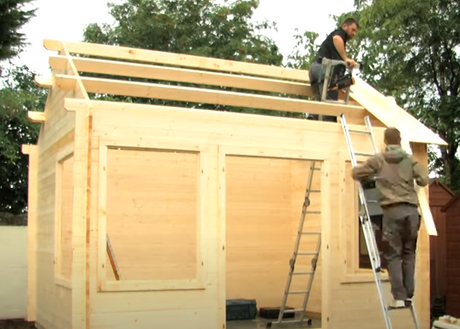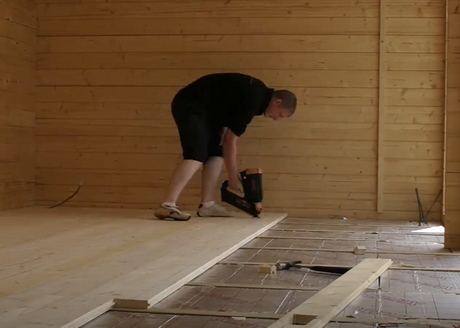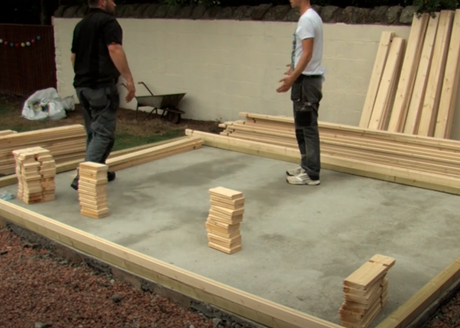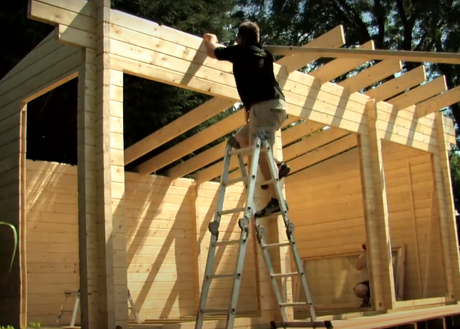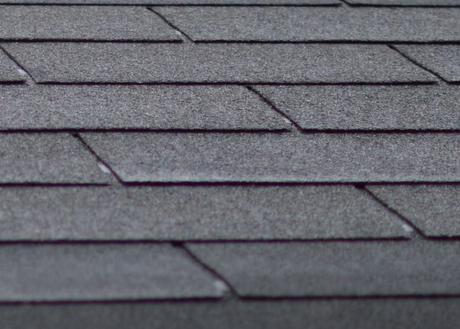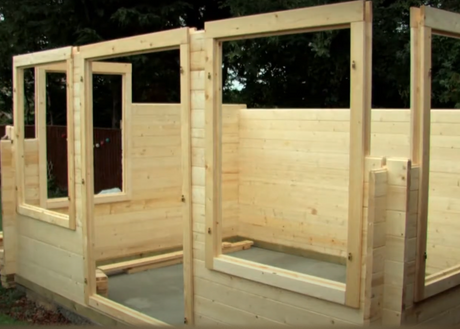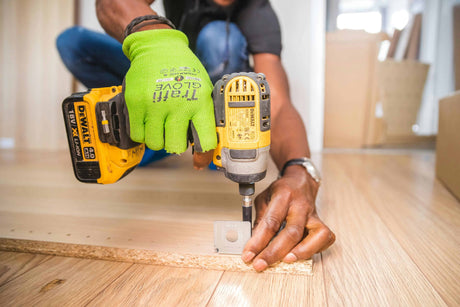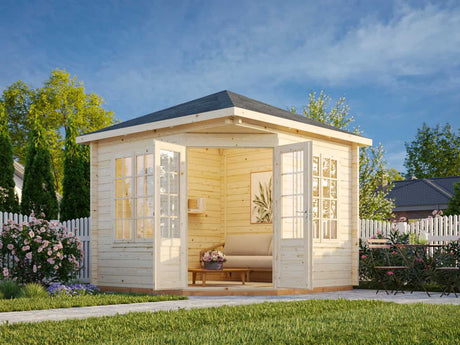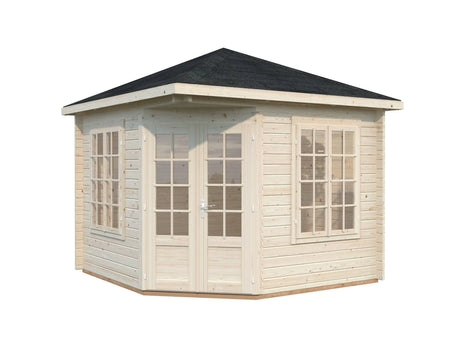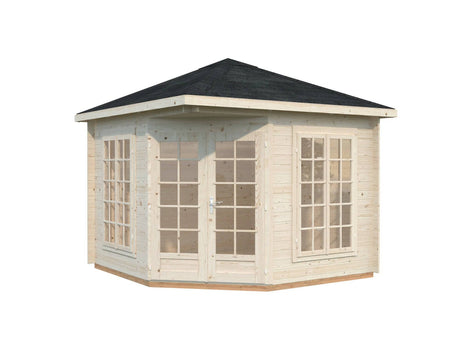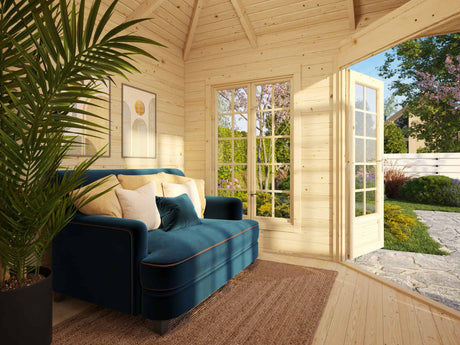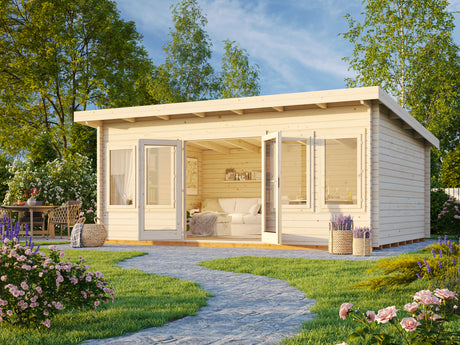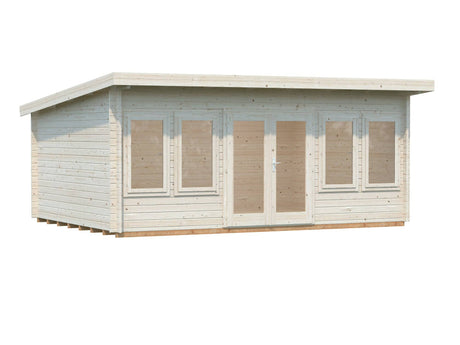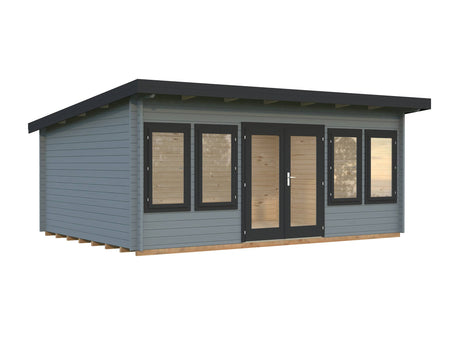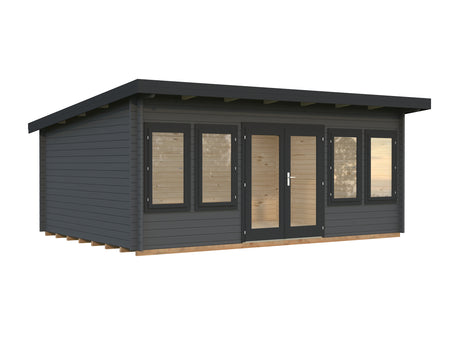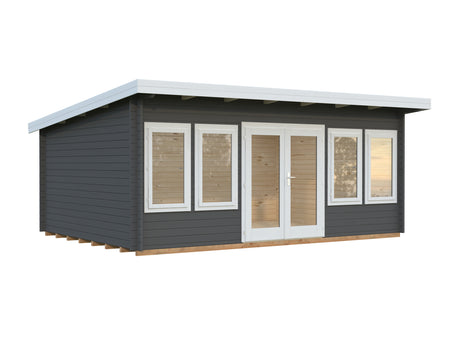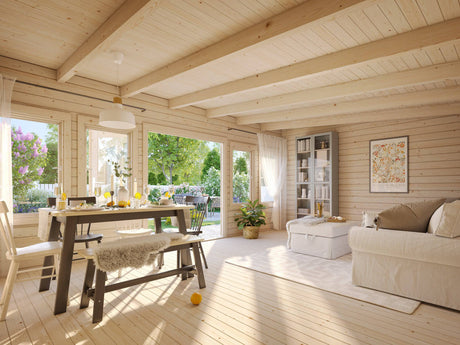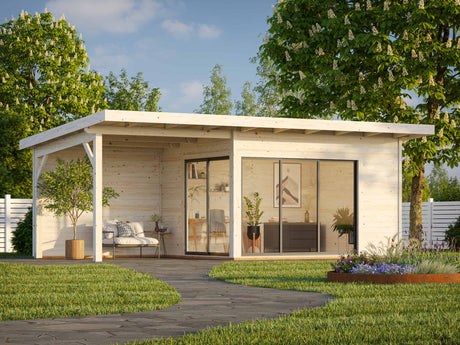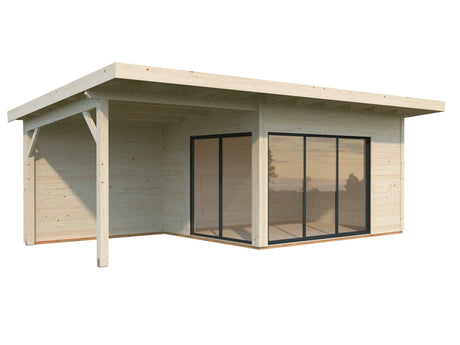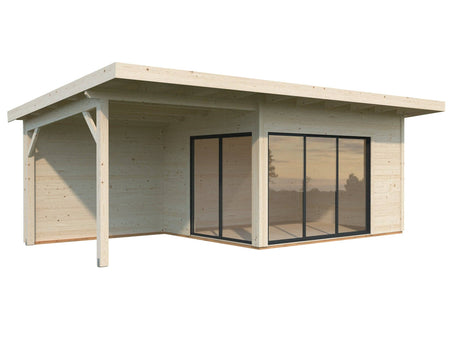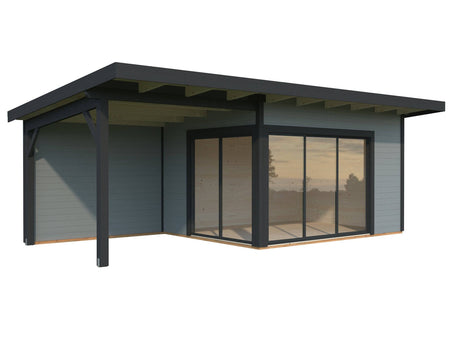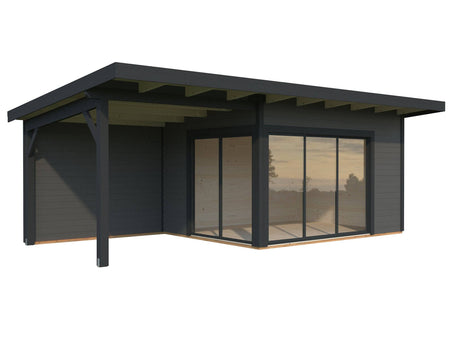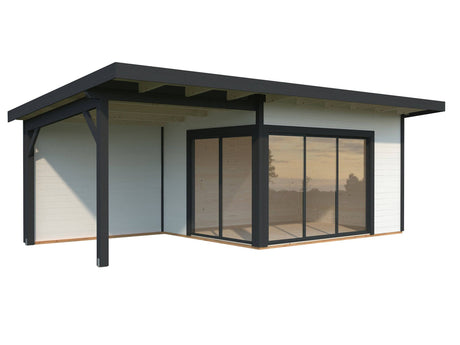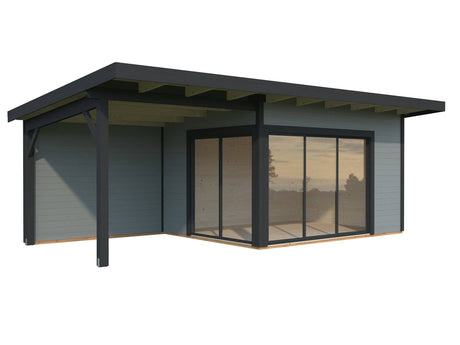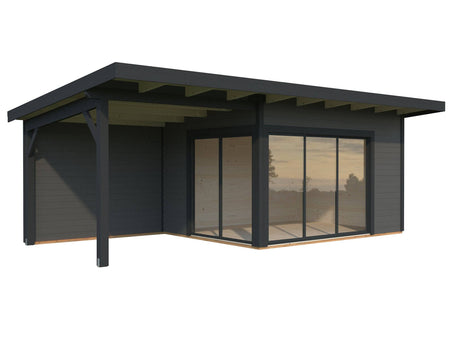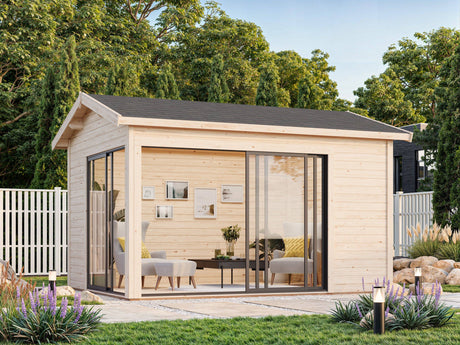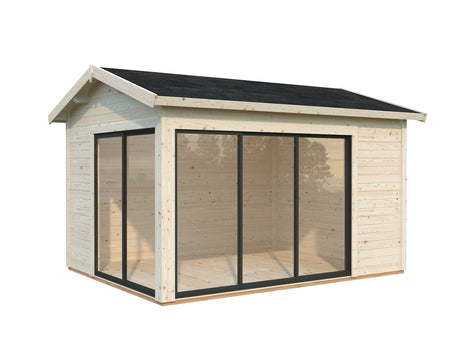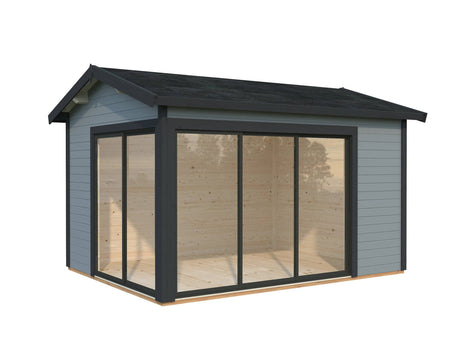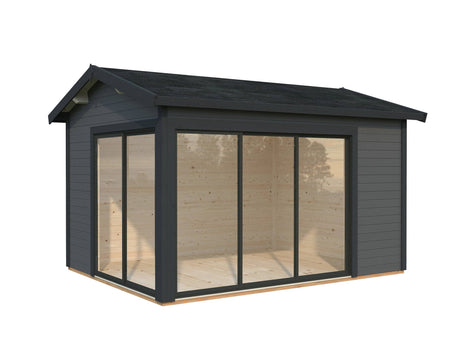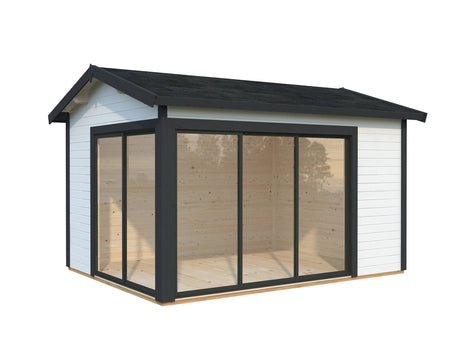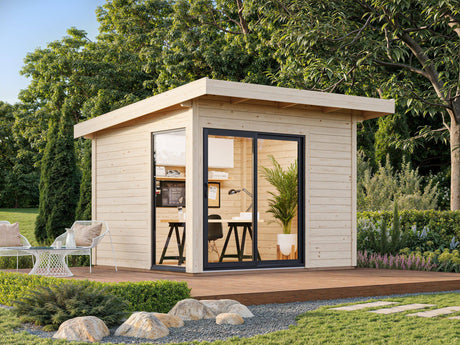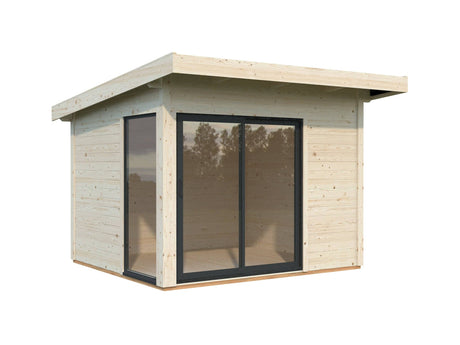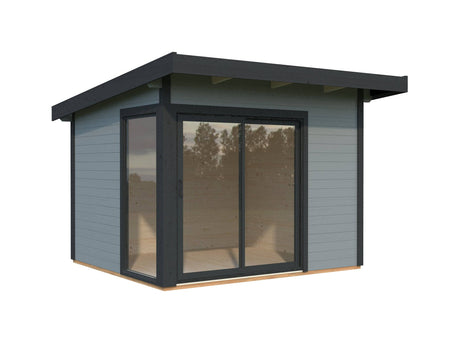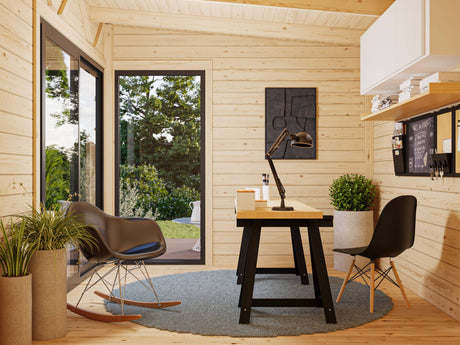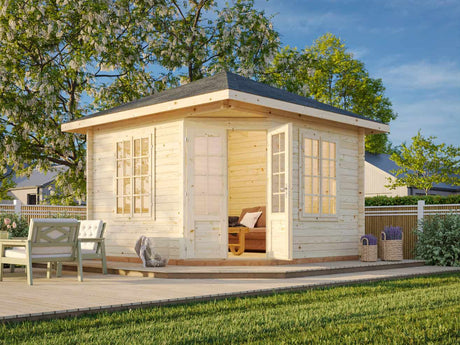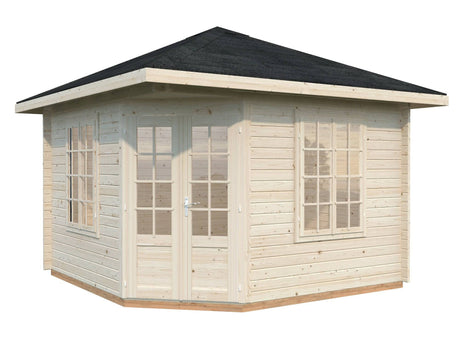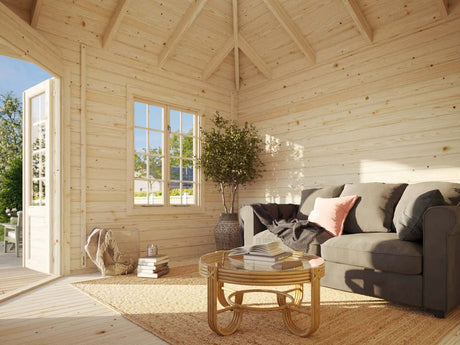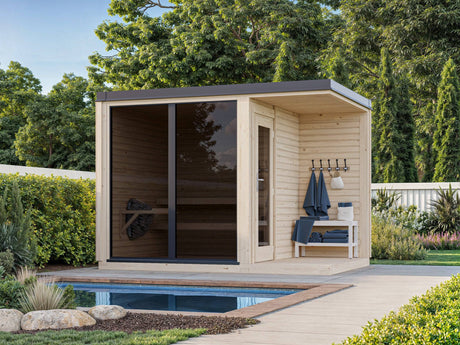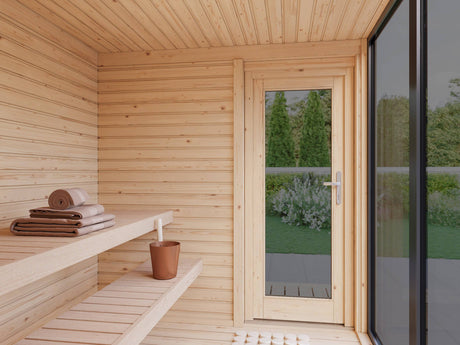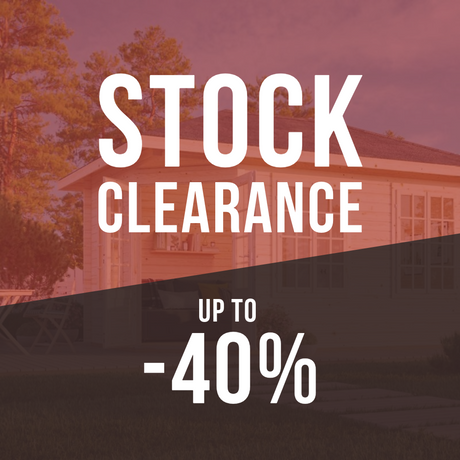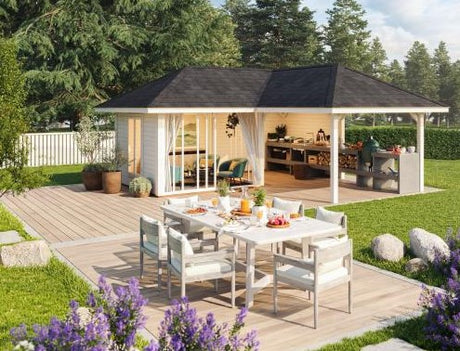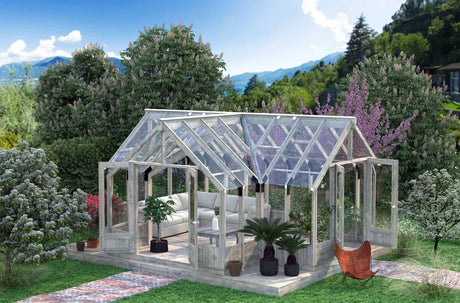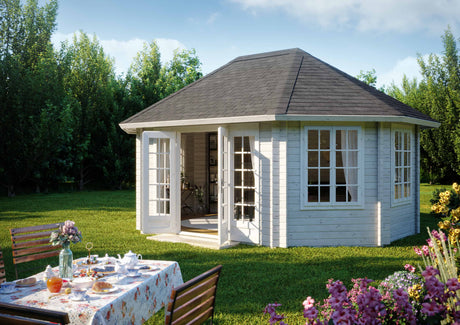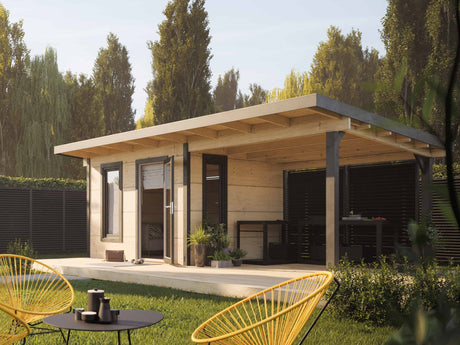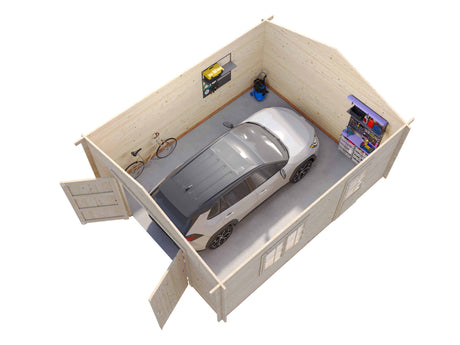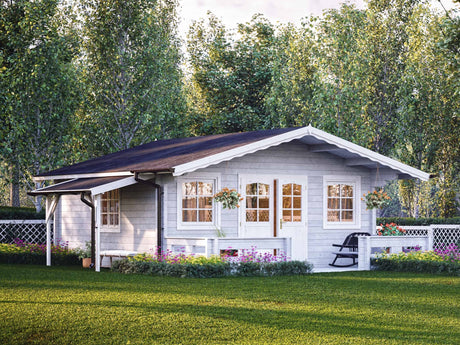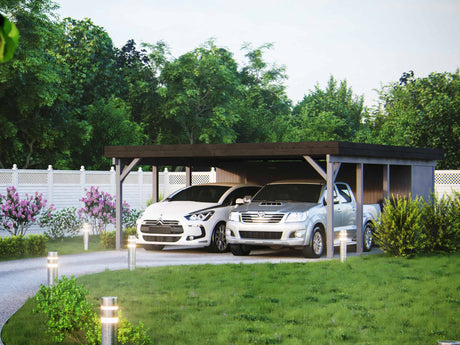Reviewed by the Palmako UK content team with insights from our garden building experts.
Here in the UK, we’re a little obsessed with sheds. They’re not just silly little buildings that make the garden look bad - they’re magical places where kids have secret meetings, and Dads go to hide when they’re frazzled. We take them seriously and choosing one requires dedication, a strong cup of tea, and a family debate about who’s allowed to use it most.
In this guide, we’ll walk you through typical shed sizes, break them down by purpose, and explain when you’ll need permission from your local council. And if you’re ready for a snapshot, the quick overview will help with that.
Quick Overview
In the UK, shed sizes are typically referred to as small (1–4 m²), medium (5–10 m²), and large (10–20+ m²). Sheds under 2.5 in height and covering less than 50% of your garden area usually do not require planning permission.
Table of Contents
Typical shed size categories in the UK
Although there is no hard-and-fast rule, shed sizes in the UK can loosely be classified as small, medium, and large. The right size depends on what you want to store and how much space you need to move around in your shed.
1. Small shed
Palmako Alice Garden Shed
Think of small sheds as outdoor closets. They’re perfect for essentials but not for bulky equipment. Ideal in small gardens, courtyards, and backyards without intruding on your outdoor space.
- Dimensions: Sizes range from 1.2 × 1.2 m to 2 × 2 m.
- Best for: Small garden equipment, push lawn mowers, pot plants, and seasonal items like outdoor cushions.
- Materials: Timber, metal, or plastic sheds which can be pre-assembled or installed as a DIY project.
- Design styles: Most small sheds have single doors and a pitched roof, but modern designs with pent roofs are becoming more popular, especially if they’re under 2.5m in height.
- Advantages: Affordable, fits into tiny spaces, quick to assemble, often exempt from planning permission.
- Disadvantages: Will feel cramped if you add shelves, and limited storage capacity.
✨ Once you’ve installed your shed, landscaping is the next step. In ’Innovative Small Garden Ideas to Make the Most of Every Inch’, you’ll find wonderful ideas to turn your garden into a showstopper in 2025.
2. Medium shed
Palmako Malta Log Shed
Medium-sized sheds are the most popular size in the UK because they provide enough room for expanding families, but can still fit into a reasonably sized garden.
- Dimensions: Typical sizes range from 2.5 × 2.5 m up to 3 × 3.5 m.
- Best for: Lawn furniture, garden tools, workshop equipment, 2-3 adult bikes, and a wheelbarrow.
- Materials: A timber or log cabin offers the most durability and longevity for family use. Plastic and metal versions do exist if you want an easy-to-move option.
- Design styles: Medium sheds can come with double doors for easy access, and commonly have at least one window for light. There are also models without windows if you are concerned with security.
- Advantages: Versatile, family-friendly size that appeals to many homeowners, offering enough space for storage and even small projects. It can sometimes be converted into a tiny office or gym.
- Disadvantages: Much larger garden space is needed, and affordability varies depending on the design, finishes, and materials.
📚 In ‘How to Insulate a Shed for Year-Round Protection’, we discuss how you can protect valuable storage items from dampness, insect invasion, and extreme weather.
3. Large shed
Palmako Olaf L Two Room Timber Workshop
The large shed is the closest you’ll get to a garden room without actually buying one. It comes as one large space, and can also be divided into two or three smaller areas. This shed is not just for storage, but can also be a workshop, hobby room, or even a dual office-workshop combo.
- Dimensions: There is a wide range of sizes, but commonly the range is: 4 × 3 m up to 5 × 4m and larger.
- Best for: Workshops, storing tools, small tractors, seated lawnmowers, household items, adult and children's bicycles.
- Materials: Large sheds in the UK are primarily made from timber, metal, or plastic. Wooden sheds are the most popular option because they offer a classic look that fits well in nature.
- Design styles: These sheds are commonly equipped with double doors, multiple windows, and thicker walls for added stability. They require solid foundations due to their size.
- Advantages: Large amount of available space, flexible for multiple uses, can be upgraded to include electricity, and insulation.
- Disadvantages: May need to comply with planning permission rules due to height and size restrictions.
⚒️ A well-maintained garden shed lasts longer and looks better. In ‘Garden shed maintenance advice: ten essential tips’, you’ll find tips for keeping your investment in top condition.
Shed foundations
Your shed will last longer if it is built on a proper base, which prevents sagging, water damage, and premature deterioration. Concrete or paving slab bases are a popular choice for larger sheds, along with wooden decking for smaller timber cabins.
Whatever choice you make, ensure it extends at least 5-10 cm beyond the shed’s footprint, and is perfectly level before installing your shed. Raising the shed off the ground with a timber frame also improves the airflow under the cabin, reducing the risk of water damage.
📚 Learn more about shed foundations in ‘Preparing a base for summer houses, log cabins and other garden buildings’.
Will I need planning permission for a shed in the UK?

For a shed to be considered permitted development and therefore exempt from planning permission, it must not be a self-contained unit, i.e., it must not have bathrooms or a sleeping area. Furthermore, the shed must comply with the following specifications:
- Maximum eaves height of 2.5 metres.
- Single-storey structure.
- Total height should not be more than 4 metres for a pitched roof, and 3 metres for other types of roofs.
- In England, Wales, and Northern Ireland, the shed should not be closer than 2 metres from the boundary line. However, in Scotland, this distance is 1 meter.
It’s advisable to consult with your Local Authority to confirm the specific rules for your area, especially if your property is in a conservation area or has other local restrictions.
⚖️ For an in-depth look at planning permission across different regions of the UK, ‘Do I Need Planning Permission For A Shed: A Short Guide’, dives into the finer details.
Looking for something smaller or perhaps much bigger? You’ll find many more options below with the Palmako Shed Size Guide.
Shed sizing guide: Palmako models
|
Purpose |
Size |
Model |
|
Xtra Small Sheds |
||
|
Single bike, small garden tools |
2.3x1m | 2.2m² |
|
|
Small garden tools, pot plants |
2.2x1.7m | 3.6m² |
|
|
Element shed |
1,83x1,7m | 3,1m² |
|
|
Xtra Large Sheds |
||
|
Double garage/shed |
6x5.3m | 28.4m² |
|
|
L-shape garage/shed with canopy |
5.3x5.7m | 21.9+5.2m² |
|
Conclusion
Have you got all kinds of things lying around your home and garden that you’d like to stash somewhere? We bet you have, and that’s why you’ve been looking at garden shed sizes. Buy too small and you’ll struggle to squeeze everything in, but buy too large and you may be struggling with planning permission.
By this time, you have a good idea of the size shed you’re after. All that’s left is to gather everyone around and celebrate your decision. And if you have any questions you’d like answered, you can take a look at our FAQs - for the discerning shed buyer.
Frequently Asked Questions
1. What is the minimum shed size for a lawnmower in the UK?
Most standard-sized push lawn mowers in the UK will fit in a 4.7m² shed. A ride-on mower needs at least 9 m². If you want to store more than a lawnmower, then a 6 m² shed will house a lawnmower, wheelbarrow, garden chairs, and a small cabinet.
2. How big should a shed be for storing bicycles?
For 2-3 adult-sized bicycles, you need a 6 m² shed. For four bikes or more, a 9 m² shed, or larger, will be necessary.
3. Can I fit a workbench inside a small shed?
Yes. A 6-7.5 m² fits a bench, shelving, and tools. However, you will need at least 8,2 m² to move around comfortably.
4. What’s the minimum shed size for a garden office conversion?
For one small desk and chair, you will need at least 9 m². If you have a large desk, extra seating, and storage, then a shed of 12–20 m² will be better suited.
5. How much space do I need to leave around a shed?
You need a minimum of 60 cm around your shed for ventilation and for doing exterior maintenance work.
6. What counts as an extra-large shed, and can I buy one in the UK?
An extra-large shed is between 20 - 30 m², and often doubles as a full garage for one or two vehicles. Extra-large sheds are widely available in the UK, and can be ordered online directly from shed suppliers. Some suppliers will custom-make your shed to specifications.
7. What types of sheds are available in the UK?
In the UK, you can find metal sheds, wooden sheds, log cabin sheds, and plastic sheds. Aesthetics, durability, maintenance, cost, and the intended purpose will influence the type of shed you need.
8. What’s the difference between a garden room and a shed?
A garden room and a shed are similar in that they may both be used for extra storage space, but traditionally, a garden room is used as an outdoor entertainment or living space. A shed, on the other hand, is mostly for storage.





